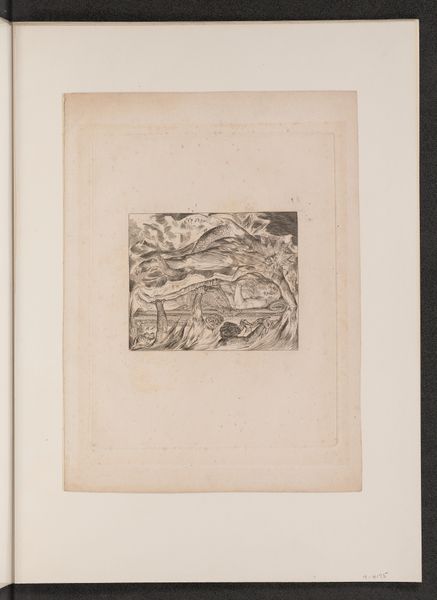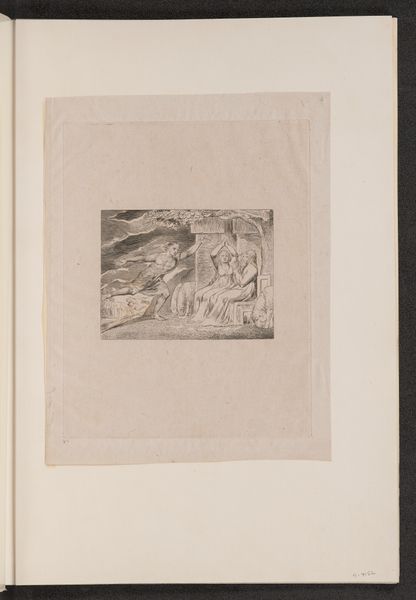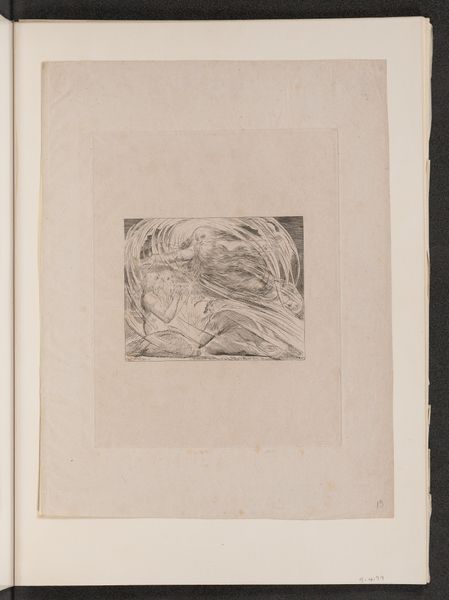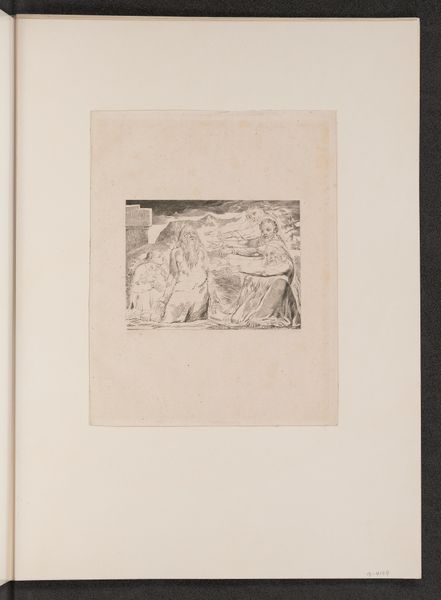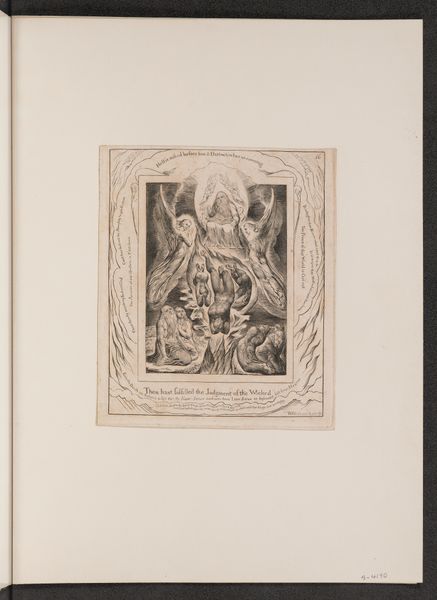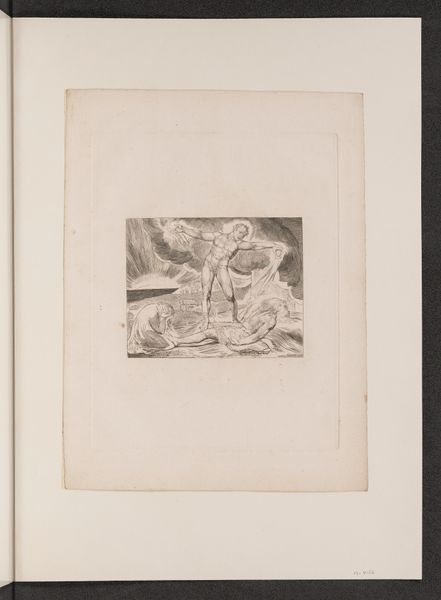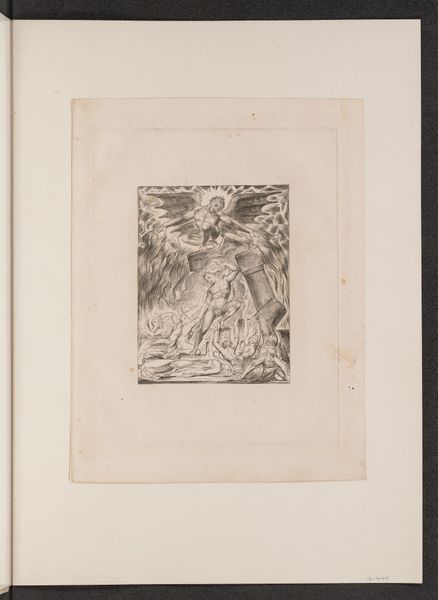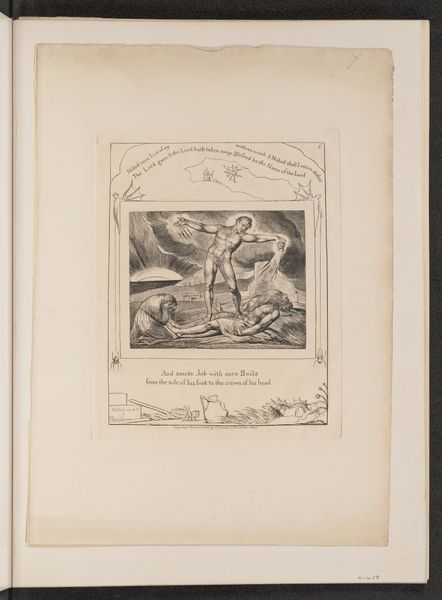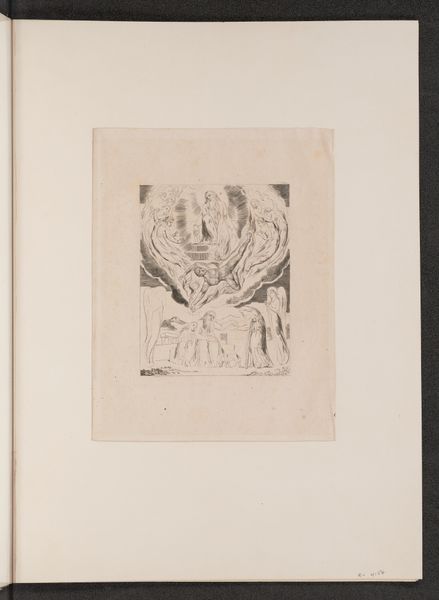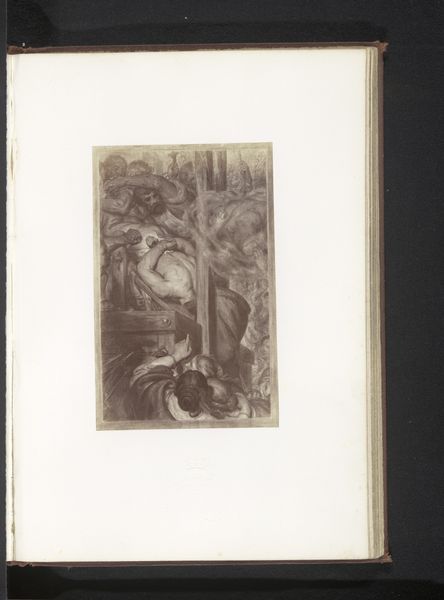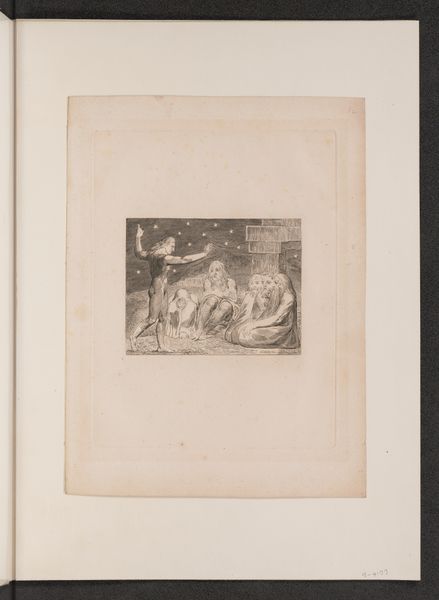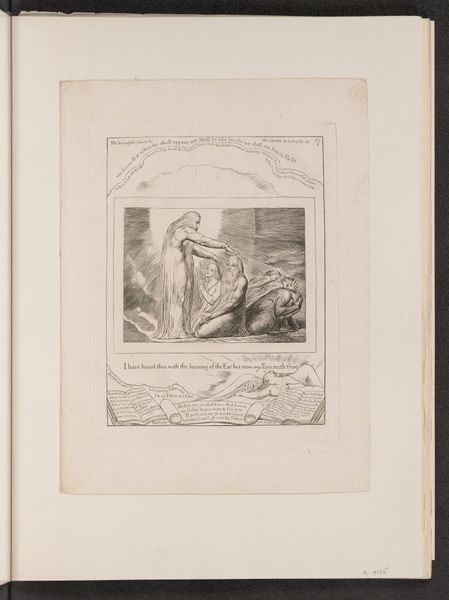
drawing, print, paper, ink, engraving
#
drawing
# print
#
figuration
#
paper
#
ink
#
romanticism
#
line
#
history-painting
#
engraving
Copyright: National Gallery of Art: CC0 1.0
William Blake created "The Lord Answering Job out of the Whirlwind" as part of his Illustrations of the Book of Job, in England sometime between 1823 and 1826. Blake's images are not mere illustrations; they're a critique of social and institutional power. This print encapsulates Blake's radical vision. It depicts a scene from the Book of Job, where God confronts Job amidst a whirlwind, questioning his understanding of divine justice. The whirlwind motif signifies the overwhelming force of divine authority, while Job and his family represent human vulnerability in the face of this power. Blake was a visionary artist who challenged the conventions of his time. His work reflects his deep engagement with religious and political ideas, as well as his belief in the power of imagination. To fully appreciate Blake, consider the social context of early 19th-century England. Look into the history of religious dissent, the impact of the Industrial Revolution, and the Romantic movement's emphasis on individual expression. By studying these sources, we can understand how Blake's art offered a powerful critique of authority and a celebration of human creativity.
Comments
No comments
Be the first to comment and join the conversation on the ultimate creative platform.

